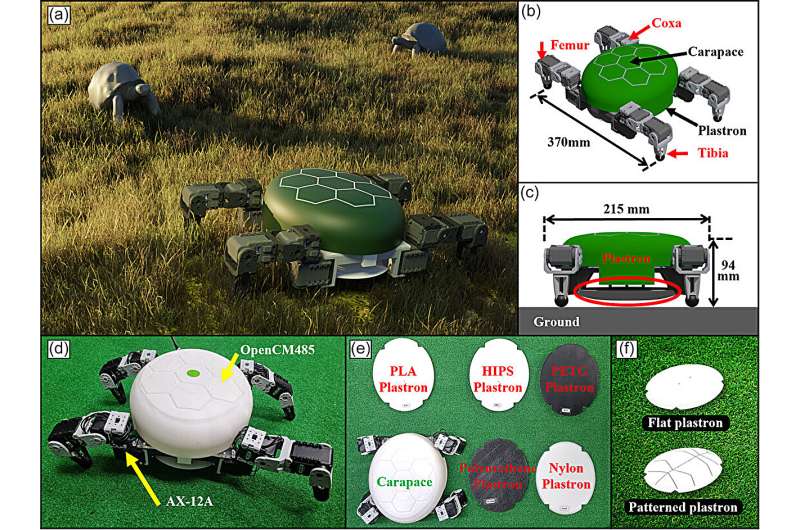This article has been reviewed according to Science X's editorial process and policies. Editors have highlighted the following attributes while ensuring the content's credibility:
fact-checked
proofread
Robots with the secrets of turtles: Reducing the cost of transport through diagonal gait

Research on energy efficiency enhancement of a tortoise-inspired legged robot, by a research team led by Dongwon Yun, professor at the Department of Robotics and Mechatronics Engineering at DGIST, has been featured on the cover of Advanced Intelligent Systems.
Professor Yun's research team is conducting research to enhance the energy efficiency of "legged robots" inspired by nature, such as turtles and tortoises. "Legged robots" are used in diverse environments as they can overcome topographical and environmental constraints and expand mobility.
However, they require higher energy consumption compared with "wheeled robots," which is why various studies have been conducted on the structure, control methods, and walking principles of robots to resolve this issue.
Against this backdrop, to enhance the energy efficiency of "quadruped (or quadrupedal) walking robots" by mimicking nature from the perspective of walking principles, Professor Yun's research team analyzed the movements of tortoises known for their high energy efficiency relative to their weight and applied the observations to robots.
Tortoises use a unique form of locomotion in which they drag their shell along the ground while moving their diagonally positioned legs at the same time.
The research team confirmed through simulations that this form of locomotion exhibits a lower "cost of transport" compared with other methods even when variables such as the size and mass of the robot are changed. Moreover, consistent results were obtained from actual robot locomotion experiments under various conditions, which proved that mimicking the locomotion of a tortoise can enhance the energy efficiency of a quadruped walking robot.
"I am delighted that this research achievement has been selected as the cover paper for such a prestigious international journal," said Professor Yun. "Furthermore, we are striving to apply this to various fields of walking robots in which the walking and energy efficiency of robots are important, such as industrial settings and exploration."
Meanwhile, Professor Yun participated in this research as the corresponding author, while Seung Hyun Lim, an integrated master's and doctoral student at the Department of Robotics and Mechatronics Engineering at DGIST, participated as the first author.
More information: Seunghyun Lim et al, A Study on the Effect of Belly‐Dragging Locomotion on a Robot that Mimics a Heavy Reptile, Advanced Intelligent Systems (2024). DOI: 10.1002/aisy.202300720


















